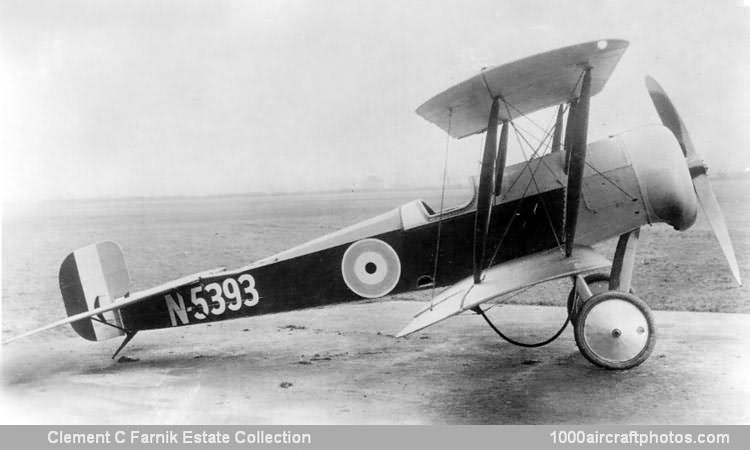10/31/2009. Remarks by Johan Visschedijk: "Derived from a single-seat sports biplane designed by Frank Barnwell, first flown in February 1914 and retrospectively known as the Scout A, the Scout D was a revised design which, completed in November 1915, had provision for a fixed synchronized 0.303 in (7.7 mm) Vickers gun. The Scout D had been preceded by two Scout Bs, which, intended for reconnaissance, were officially unarmed, but one of which was fitted with a rifle on each side of the fuselage and angled outward to avoid hitting the propeller when fired.
These had been followed by 161 Scout Cs (74 for the RN and 87 for the RFC) which, again, were officially unarmed, although much ingenuity was displayed in the field in fitting pistols, rifles and carbines, while some RN Scouts carried 24-round canisters of Ranken darts which it was intended to use against Zeppelins. The Scout D was thus the first model for which armament was officially intended, though relatively few of these had the synchronized Vickers gun and the armament of others varied considerably, some having a 0.303 in (7.7 mm) fixed Lewis gun firing straight ahead without synchronizing equipment and others having a movable Lewis above the upper wing.
Of the 210 examples built, 80 went to the RN, of which 50 had 100 hp Gnome Monosoupape engines and the remainder the 80 hp Gnome. Most of those delivered to the RFC ultimately had the 80 hp Le Rhône engines.
The pictured aircraft was fitted with the 100 hp Gnome Monosoupape engine and the enlarged cowling showing the bulge on the starboard side expediting the extraction of the engine exhaust. It served with RNAS No. 2 Wing at Mudros, Greece."
